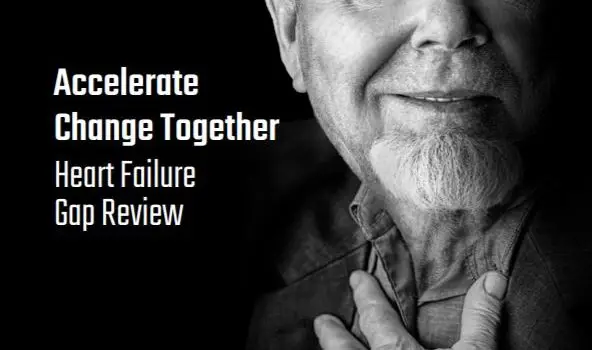New initiatives will raise public awareness of the burden of heart failure to drive a transformation in HF prevention, diagnosis, and treatment.
24 AUGUST 2020
AstraZeneca today announced a new partnership with the leading voice in cardiovascular (CV) health, the World Heart Federation (WHF), to drive global action to prevent, control and reduce the burden of CV disease and its associated risks and complications.
Reducing the global burden of heart failure (HF) will be a key priority of the partnership. One of the partnerships first activations, The Heart Failure Gap Review, revealed that over half (55%) of the general public were unable to identify a definition of HF.1 AstraZeneca and WHF will now work together to increase awareness of the condition and advance evidence-based policy solutions designed to improve HF prevention, diagnosis and management.
Helen Yeh, Vice President, Biopharmaceuticals Medical, Cardiovascular Renal and Metabolism, AstraZeneca, said: “It’s clear from the Heart Failure Gap Review that we must shine a spotlight on the reality of HF. With WHF, we will encourage and drive toward meaningful solutions, aiming to elevate HF as a global priority, enhance prevention and diagnosis capabilities, and improve HF patient management.”
The official partnership announcement this week coincides with AstraZeneca’s launch of Spotlight On Heart Failure, with the support of WHF. The campaign aims to raise awareness of the signs and symptoms of HF and encourage healthcare professionals to initiate discussions with at-risk patient groups. The campaign website features accounts of the emotional experience for those living with or at risk of HF, caregivers and healthcare professionals – providing insights into what can be done today to slow disease progression and increase quality of life for patients tomorrow.
Jean-Luc Eiselé, Chief Executive Officer, World Heart Federation, said “The morbidity and mortality rates of HF remain high globally, despite the significant advances in treatment and prevention. WHF’s HF Roadmap, created with an overall objective of reducing the global burden of HF, and our partnership with AstraZeneca is helping us improve the health of people living with HF.”
Additional partnership efforts include AstraZeneca’s support of the WHF’s Use Heart to Fight COVID-19 campaign, launched earlier this year to address the vulnerability of people with HF and other CV, renal and metabolic (CVRM) conditions during the pandemic. AstraZeneca and the WHF will also work closely on policy initiatives which will elevate HF as a political priority, and aim to change the current treatment landscape.
Heart Failure
HF is a life-threatening disease in which the heart cannot pump enough blood around the body.2 It affects approximately 64 million people worldwide, and is a chronic and degenerative disease where approximately half of patients will die within five years of diagnosis.3-5 HF remains as fatal as some of the most common cancers in both men (prostate and bladder cancers) and women (breast cancers).6 It is the leading cause of hospitalisation for those over the age of 65 and represents a significant clinical and economic burden.7
World Heart Federation
The World Heart Federation (WHF) is the world’s leading voice in cardiovascular health, with more than 200 member organisations across 100 countries. The WHF mission is to help people across the world lead longer and better lives through prevention and control of heart disease and stroke, with a focus on equal access to heart health care.
AstraZeneca in CVRM
Cardiovascular, Renal and Metabolism (CVRM) together forms one of AstraZeneca’s three therapy areas and is a key growth driver for the Company. By following the science to understand more clearly the underlying links between the heart, kidneys and pancreas, AstraZeneca is investing in a portfolio of medicines to protect organs and improve outcomes by slowing disease progression, reducing risks and tackling comorbidities. The Company’s ambition is to modify or halt the natural course of CVRM diseases and potentially regenerate organs and restore function, by continuing to deliver transformative science that improves treatment practices and cardiovascular health for millions of patients worldwide.
References
- AstraZeneca PLP. Data on File. ID: REF – 74964. March 2020
- Mayo Clinic. Heart failure; 2017 [cited 2020 Aug 04]. Available from: URL: https://www.mayoclinic.org/diseases-conditions/heart-failure/symptoms-causes/syc-20373142.
- Vos T et al. Global, regional, and national incidence, prevalence, and years lived with disability for 328 diseases and injuries for 195 countries, 1990–2016: A systematic analysis for the Global Burden of Disease Study 2016. The Lancet 2017; 390(10100):1211–59.
- Bhuiyan T, Maurer MS. Heart Failure with Preserved Ejection Fraction: Persistent Diagnosis, Therapeutic Enigma. Curr Cardiovasc Risk Rep 2011; 5(5):440–9.
- Mozaffarian D et al. Heart Disease and Stroke Statistics-2016 Update: A Report From the American Heart Association. Circulation 2016; 133(4):e38-360.
- Mamas MA et al. Do patients have worse outcomes in heart failure than in cancer? A primary care-based cohort study with 10-year follow-up in Scotland. Eur J Heart Fail 2017; 19(9):1095–104.
- Azad N, Lemay G. Management of chronic heart failure in the older population. J Geriatr Cardiol 2014; 11(4):329–37.


